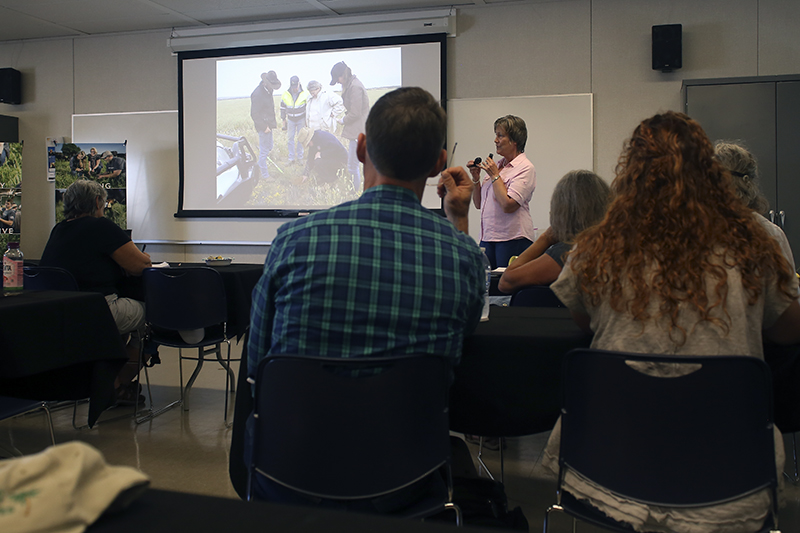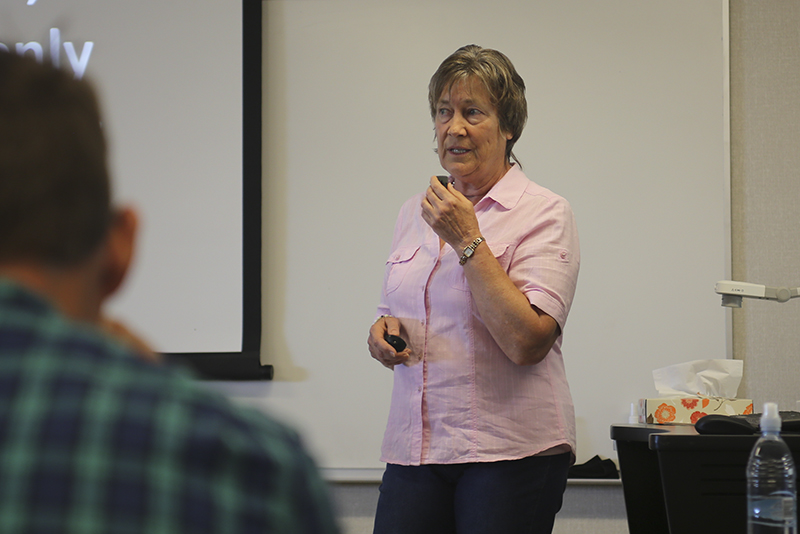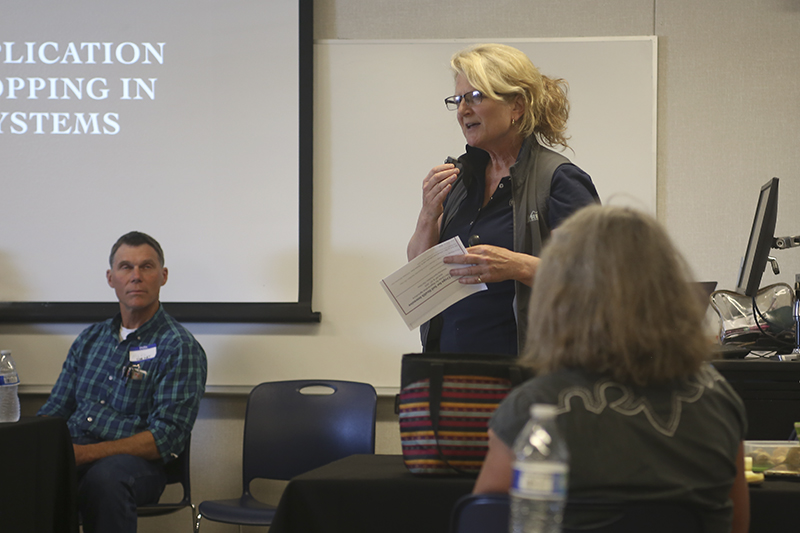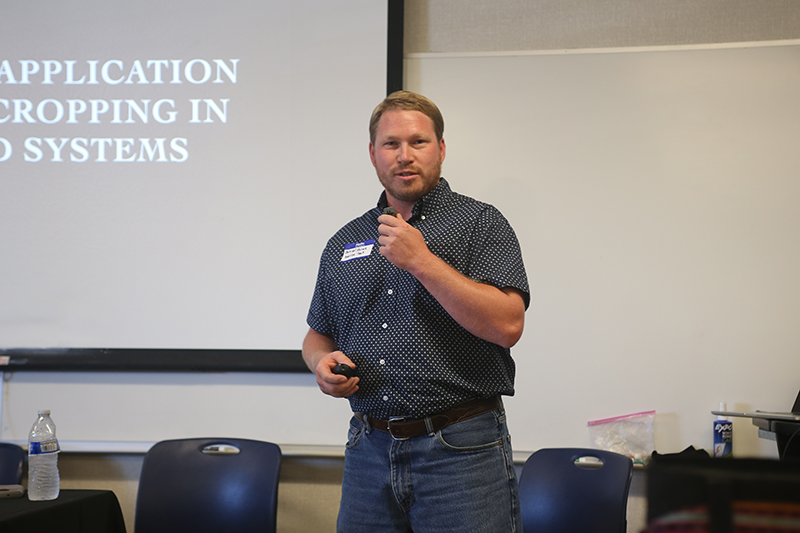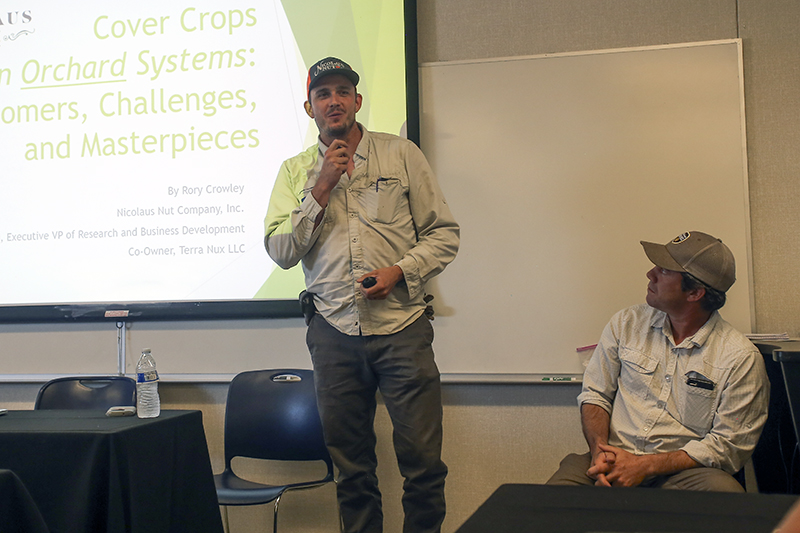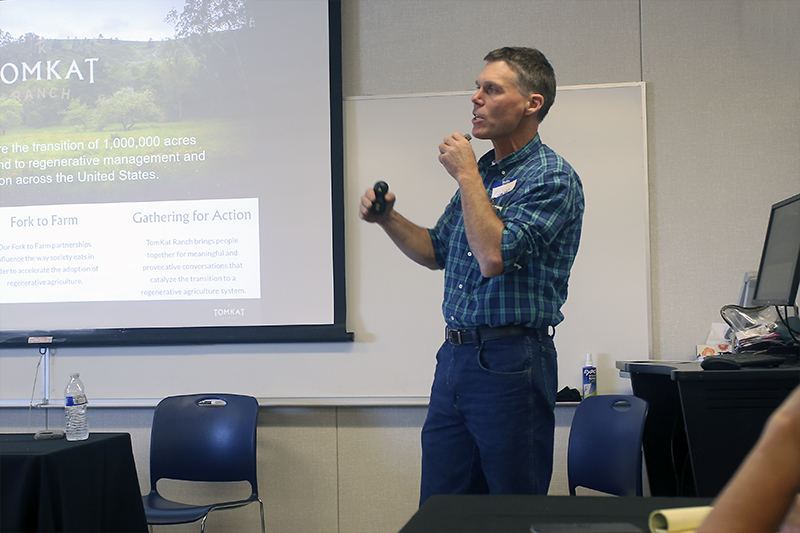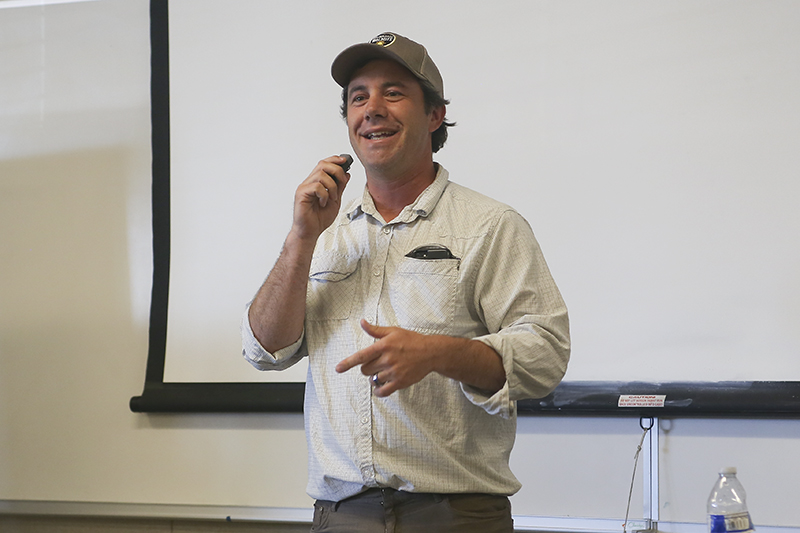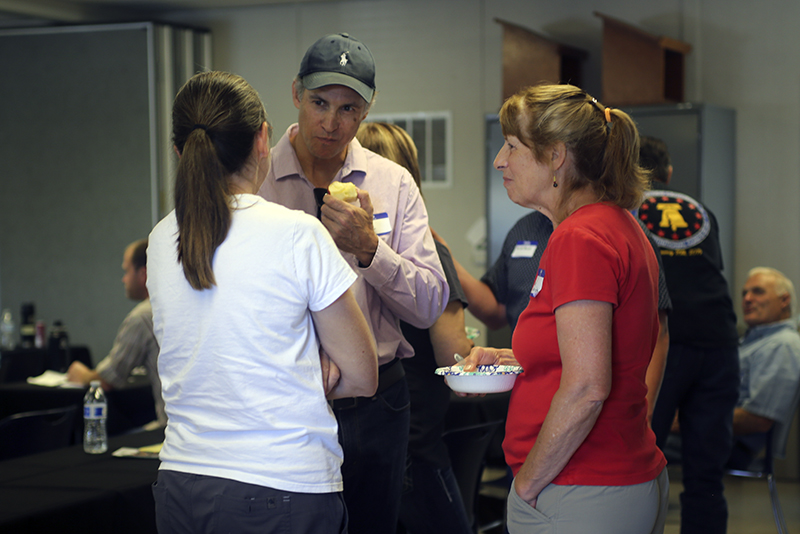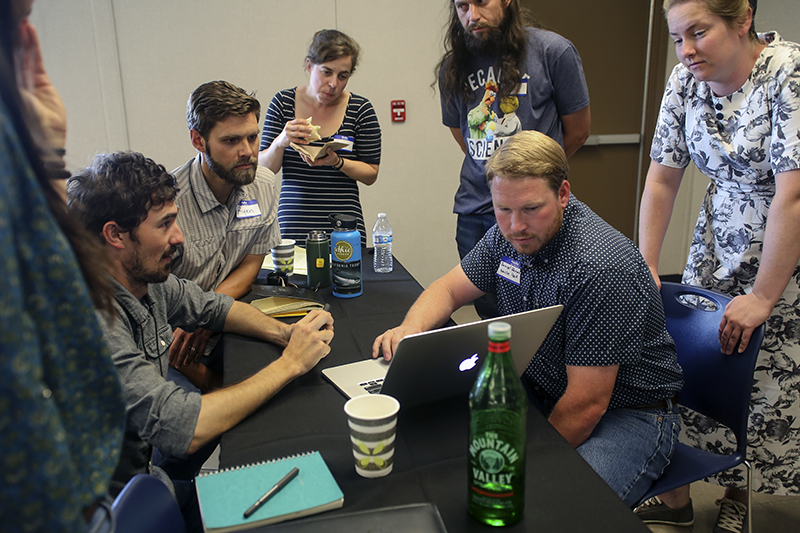
Australian Soil Ecologist Christine Jones Gives a Paradigm-Changing Workshop at Chico State
by Sheryl Karas, CRA staff
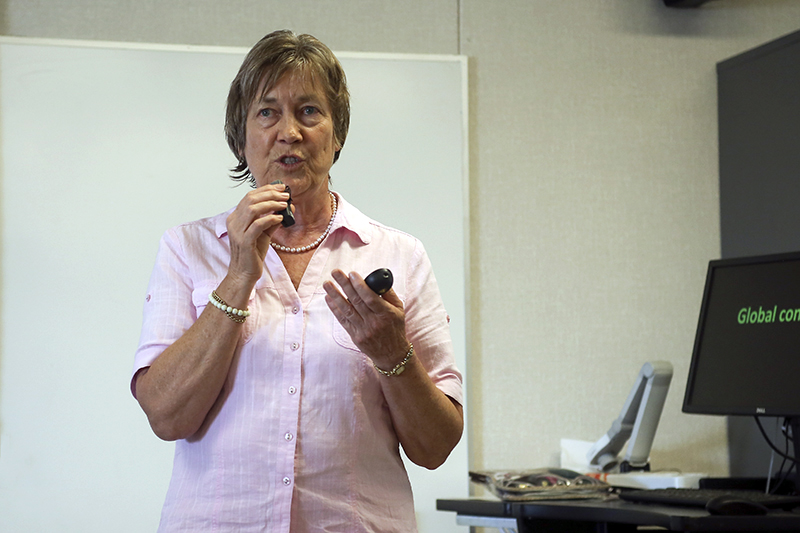
Soil Ecologist and Cover Crop Specialist Christine Jones wants you to know that human life could not exist without microbes. In fact, if we want food security and to mitigate the effect of climate change, we need to learn to work cooperatively with the microscopic creatures that, along with plants, compose 99% of the life on this planet.
Jones was here in Chico, on Monday June 24, 2019, to speak at a Cover Crops and Soil Health Intensive at the University Farm. I sat down with her at a break to ask what was the most important topic from this event that she wished everyone could hear. “The importance of microbes,” she said without hesitation. “And that we need to stop looking at our world from a reductionist science point of view.”
Jones believes that creating adequate solutions for the challenges the world faces have been hampered by attempting to make choices based on too simplistic a world view. “We need a systems approach,” she said during the workshop. “The earth is an ecosystem, you are an ecosystem.” She described in detail how no one entity on the planet lives as an individual, particularly not one that lives in isolation from all other living things. Microbes live symbiotically with all animal and plant life, and without them we could not breathe, have anything to eat, be able to digest what we eat, or survive. In fact, microorganisms outnumber human cells(opens in new window) in our bodies by 10 to 1. Even our DNA is not completely human(opens in new window)—8% is viral in origin.
But humans make up only a tiny 0.01% of the biomass by weight on earth. One teaspoon of soil contains more microbes than all the humans on the planet. When it comes to making choices for our future, Jones says that we need to understand the role these microbes play and work with, not against them.
Healthy Soil for a Healthy Future
Christine Jones says that every human civilization that degraded their soil has collapsed. Soil degradation is currently occurring at such a rate that it is estimated we only have 60 years of topsoil left worldwide. Jones believes that paying attention to the biology of the soil, especially the microbiology, is essential to help solve this problem. After all, microbes and other organisms in the soil create the humus that constitutes healthy soil with structure that can sequester carbon in a stable form. When that soil is covered with plants—as is the norm in all but the most degraded natural environments— water infiltration is better, the soil holds water better, soil erosion decreases and its fertility dramatically improves. In fact, even badly degraded soil can be restored using cover crops and biostimulants that support the soil microbiology without the need for synthetic inputs.
Actually, Jones says, outside inputs, especially the use of nitrogen and herbicides, are so detrimental to the microbiology that eventually farmers need to add more and more to make up for what the microbes are no longer able to provide. The soil becomes compacted and the fertility eventually declines even with added fertilizer. It is her opinion that by reducing the use of fertilizer step by step over about three years, while keeping the soil covered with a diverse mix of cover crops, farmers can expect to build more nitrogen through the increased soil biology than the synthetic nitrogen has been seen to provide. In her native Australia, farmers such as Ian and Dianne Haggerty have proven this can be done.
Ian and Dianne Haggerty have been reclaiming 8000 hectares of badly salinized sandy soil on the edge of salt lakes in western Australia. They use no added fertilizers except for those provided by sheep allowed to graze on the land for the first year while the land rests and then cover crops added through seeds coated with vermiliquid (worm compost tea) that activates the soil biology. The results were fast. One year after they started they were able to successfully grow a barley crop. Today they get four times the value of their land from their crops every year. The land is not tilled—they plant straight into the cover crop—and they use no other fertilizers or herbicides.
Later in the workshop Jones presented the results of studies showing that the more species of plants used in a cover crop mix the better. More biodiversity above the ground supports more biodiversity in the soil. The results were more biomass created, plants better able to withstand drought because of better rainwater infiltration, increased soil depth, and greatly increased soil carbon. Jones discussed the implications for climate change mitigation because of increased carbon sequestration and decreased water vapor lost through evaporation. She also talked about the potential impact on food quality and human health. The ideas presented switch the paradigm in regards to how we might approach climate change, health, and food security. Workshop participants were energized and eager to learn more.
